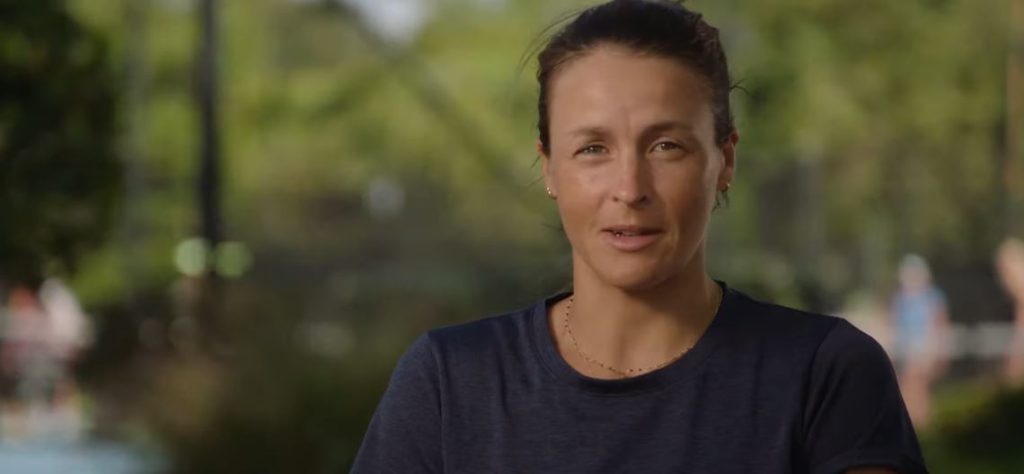Tatjana Maria Net Worth 2025, How the Queen’s Club Champion Cashed In

Not only did Tatjana Maria win a title when she raised the Queen’s Club trophy in June 2025, but it also symbolized more than 20 years of perseverance, creativity, and financial restraint. Not only did she win the title at age 37, but she also earned $218,000 in prize money from that one event, making her the oldest WTA 500 winner ever. Her net worth solidified into the $4 million range with that payout, which was especially advantageous for a player nearing the end of her competitive career.
In the last ten years, Maria’s career has been marked by rhythms that remarkably resemble the tales of Kim Clijsters and Serena Williams—women who refused to accept the notion that motherhood was the last set. Rather, she used those life turning points as inspiration. She was particularly dangerous on grass courts because of her strategic playing style, increased court presence, and renewed focus following her 2021 return after giving birth to her second daughter.
Tatjana Maria Net Worth 2025
| Attribute | Information |
|---|---|
| Full Name | Tatjana Maria (née Malek) |
| Date of Birth | August 8, 1987 |
| Birthplace | Bad Saulgau, West Germany |
| Nationality | German |
| Height | 5 feet 8 inches (1.72 m) |
| Turned Professional | 2001 |
| Career Prize Money | Approximately $6.2 million (as of June 2025) |
| Estimated Net Worth | $4 million |
| Spouse & Coach | Charles-Edouard Maria (married since 2013) |
| Children | Charlotte (b. 2013), Cecilia (b. 2021) |
| Current Singles Rank | No. 43 (WTA, June 2025) |
| Career-High Singles | No. 42 (January 2024) |
| Endorsements | Yonex (racquets), Nike (sportswear) |
| Grand Slam Highlight | Wimbledon Semifinalist (2022) |
| Recent Achievement | Queen’s Club Champion (WTA 500, June 2025) |
Tatjana built a career that valued consistency over hype by collaborating closely with her husband and full-time coach Charles-Edouard Maria, who was once a French player. He has helped her navigate both highs and lows, including the 2022 Wimbledon semifinal and the postpartum ranking declines. Her one-handed backhand, which is uncommon on the women’s tour and a crucial tactical advantage on grass, significantly improved under his tutelage.
She defeated Maria Sakkari and Jeļena Ostapenko, two top-seeded players, at the 2022 Wimbledon Championships before losing to Ons Jabeur in the semifinals. In addition to gaining her international recognition, that run opened up new business prospects and a sponsorship deal with Yonex. Her performance was socially significant and statistically impressive for a mother of two. Her prominence has spurred more general discussions about maternity protection in professional sports in the context of athlete parenting.
Considering that Maria never depended on Grand Slam titles or big brand deals, her ascent has been incredibly successful financially. Rather, she has amassed her wealth match by match, and by 2025, she will have played 1243 professional games, second only to Chris Evert and Martina Navratilova. Her incredibly dependable physical and mental resilience is demonstrated by her consistency, which is extremely uncommon in modern tennis.
Maria has established a very effective niche for herself by carefully planning her schedule and selecting surfaces that complement her slice-heavy style. She has chosen to compete in tournaments that offer her the best combination of ranking points, performance potential, and revenue opportunity rather than chasing every tour stop. In addition to earning her more money, defending her title at the Copa Colsanitas in Bogotá solidified her standing as a contender on clay courts, an area that is frequently dominated by younger, more aggressive players.
Her collaborations with Nike and Yonex are subtly profitable. Despite not being ostentatious, they are surprisingly cost-effective in relation to the demands on her time and enable her to keep her competitive focus. Maria’s endorsement strategy, which prioritizes sustainability over spectacle, feels especially novel when contrasted with mega-deals involving Naomi Osaka or Emma Raducanu.
A subtle but discernible change has occurred in the way female athletes handle brand and family narratives over the last three years. Maria’s ascent is evidence of this development. Her media presence has developed organically, not as a result of controversy but rather out of genuine admiration. She has appeared in European lifestyle magazines, been asked to speak at panels for women in sports, and is frequently cited when talking about striking a balance between motherhood and ambition.
She has developed a model that is both financially and emotionally rewarding by maintaining her fitness, picking up new tactical skills, and relying on her network of supporters. Her experience is representative of a larger pattern: athletes who change and grow can continue to be profitable and competitive for longer than ever. She has actually come to represent what it means to age well and strategically in high-level sports.
Maria’s glow has remained constant, in contrast to her peers who burn brightly and fade. Her story is subtly powerful, but she is not a media darling. Fans were won over by her skill and grace rather than by her spectacular displays. She has spent years honing her skills rather than merely chasing attention, and her financial situation reflects that.
Tatjana Maria has redefined what it means to peak in a field that is frequently dominated by young people. Her late-career triumphs are the result of accumulated wisdom rather than random events. She is more than just a talented competitor as she continues into the second half of 2025; she is a living example of the idea that it’s never too late to be great—and successful.



